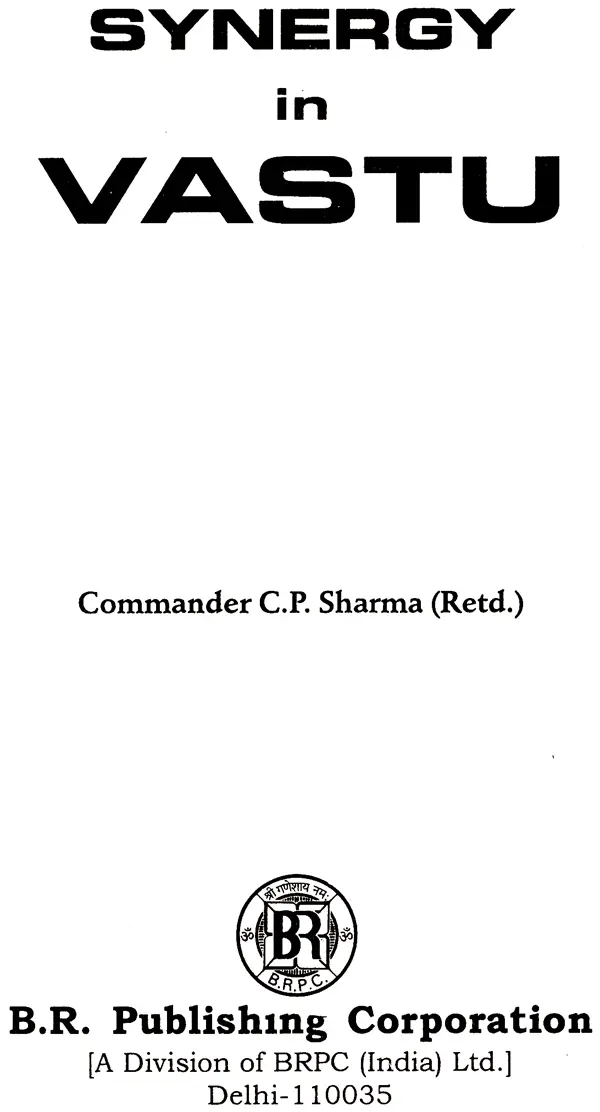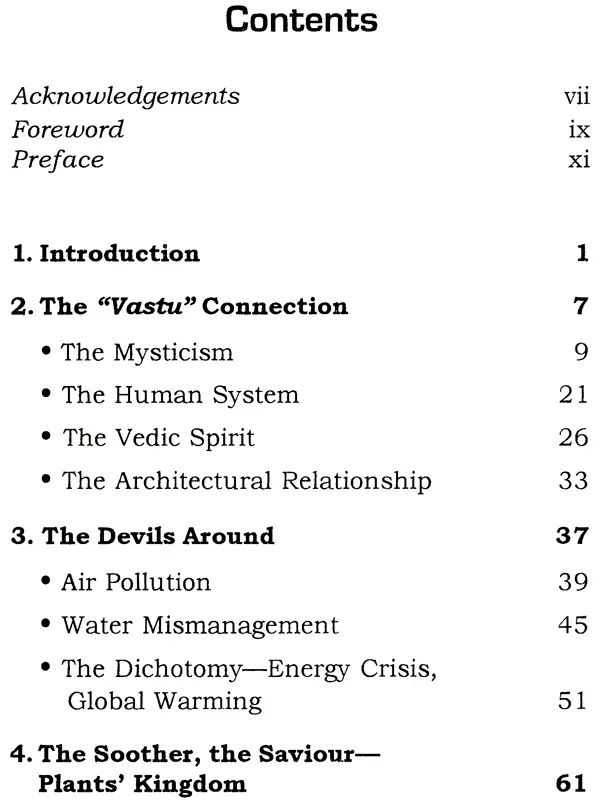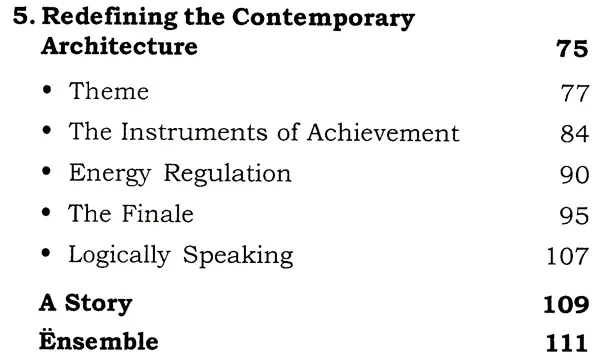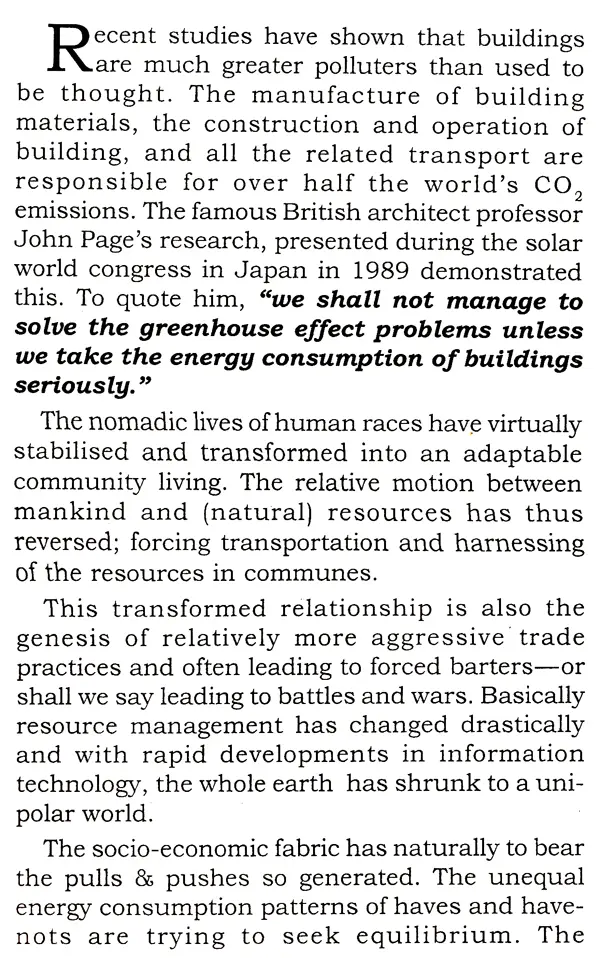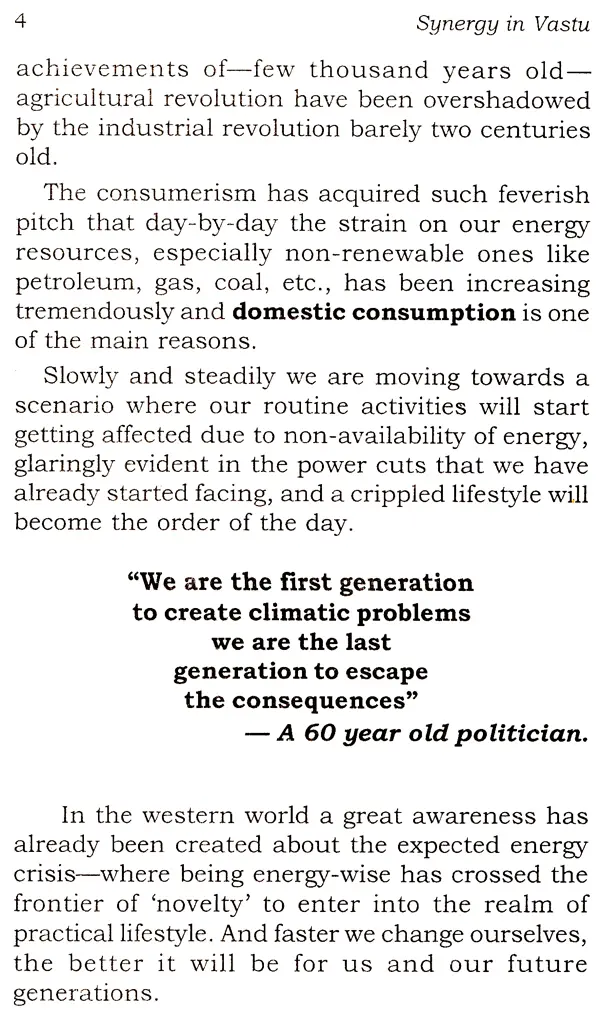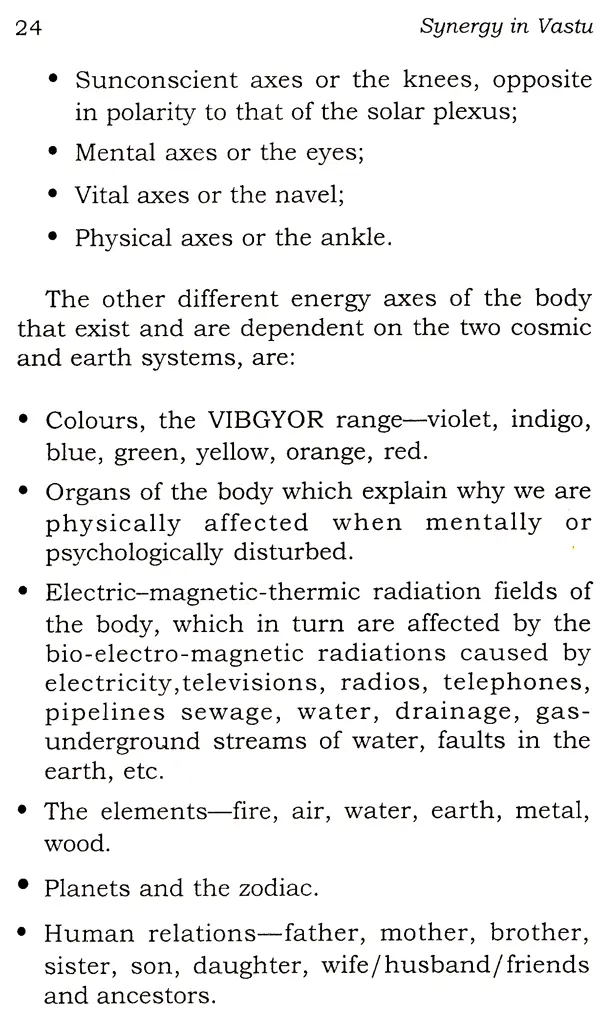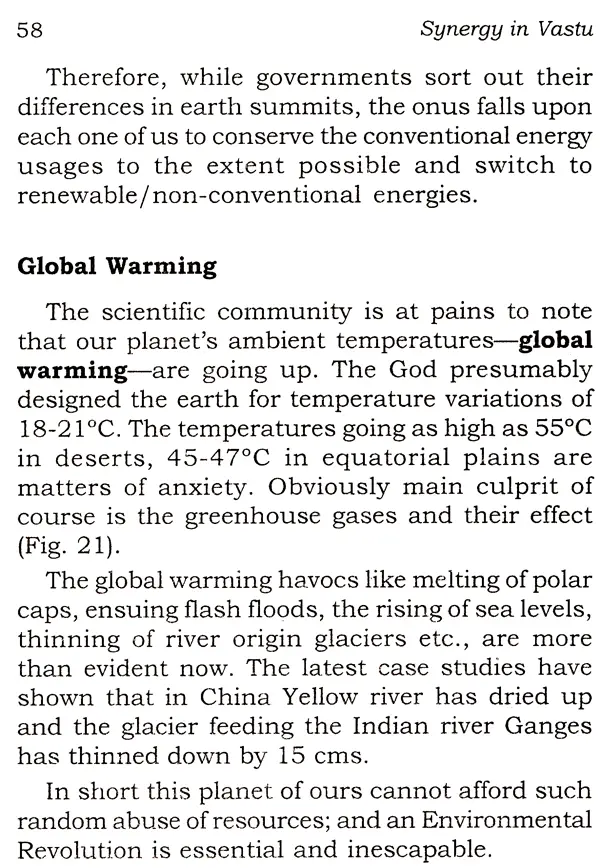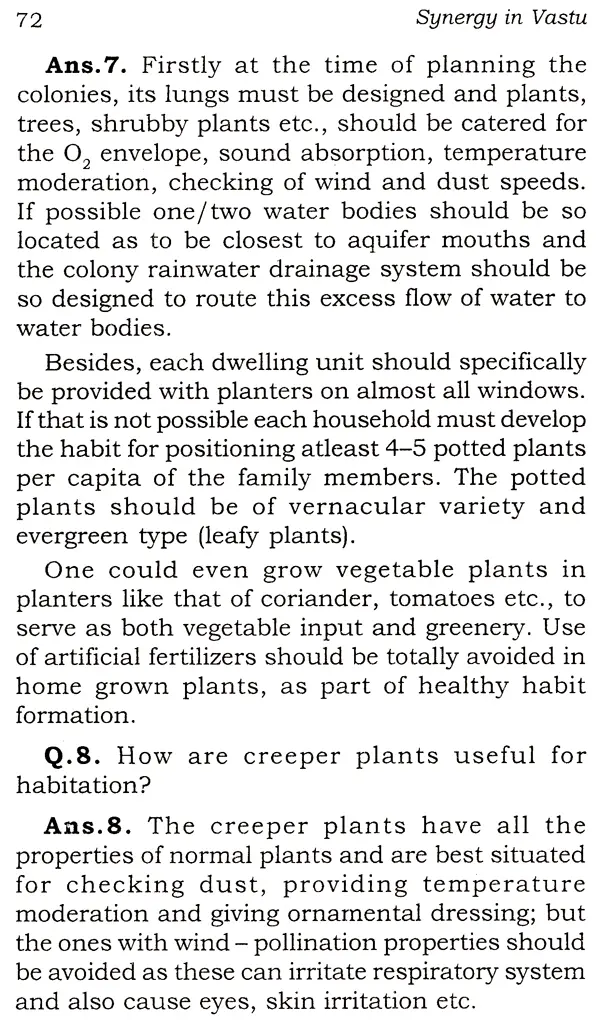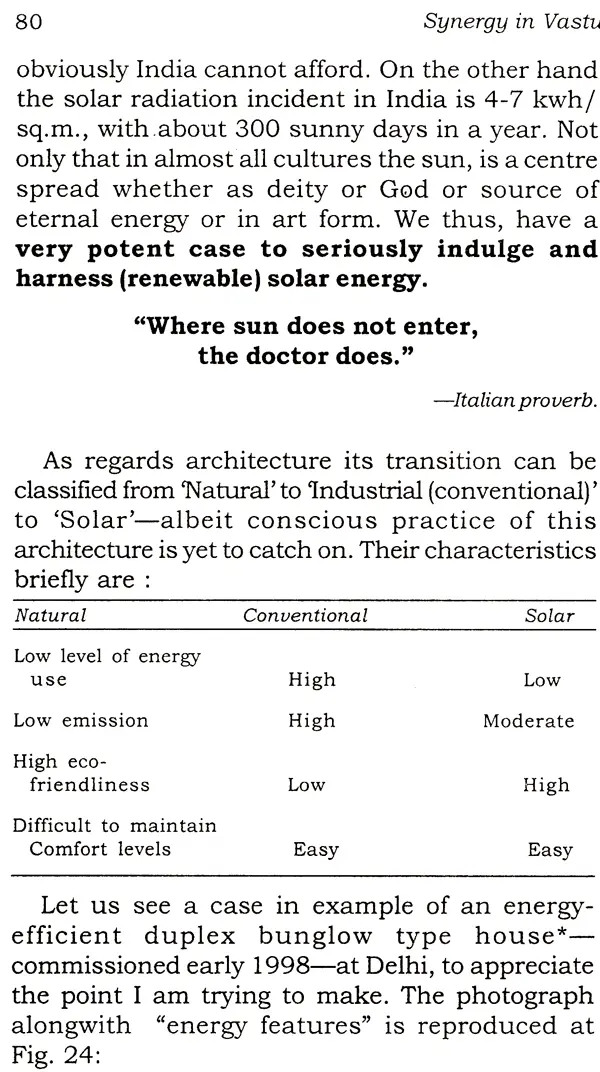
Synergy in Vastu
Book Specification
| Item Code: | UAS949 |
| Author: | C.P Sharma |
| Publisher: | B.R. Publishing Corporation |
| Language: | English |
| Edition: | 2000 |
| Pages: | 108 |
| Cover: | PAPERBACK |
| Other Details | 8.50 X 5.50 inch |
| Weight | 150 gm |
Book Description
South Indian Studies presents thirteen essays discussing in close detail topics that range from the cultural significance of the coconut to the treatment of nature in Akam poetics, from matriliny to Yakshagana, from Hindu Astronomy to Buddhist Art, from the role of the village to the public library systems, and from St.Thomas to C.P. Ramaswamy Aiyar. These essays of interdisciplinary nature by diverse hands find common ground and concern in focusing for the most part on the indigenousness of this region. Contributors include Kapila Vatsyayan, Elinor Gadon, Usha V.T. and S. Murali among many others. These essays are more than merely introductory, more than mere critical assessments. The pattern that emerges from a close reading of the various facets of South Indian history and life is one rich in complexity and yet indigenous, and like the Tantric mandala, with its different colours and patterns, configuring into a unified system. This book certainly is bound to be of interest to the casual reader as well as the scholar.
C.P. Sharma joined the Indian Navy in 1969 and took premature retirement after 25 years of active service in the year 1994. He did his Electrical Engineering degree from B.H.U. Varanasi in 1969 and PG Diploma in Navigation, Communication and Radars from Russia, in 1979. Synergy in Vastu is a thought provoking book and endeavours to propagate the harmony of bio-eco-cosmo energy systems with the conventional ones for efficient and creative human co-existence with nature.
I gratefully acknowledge the help of Prof. H.D. Chhaya-ex-School of Planning and Architecture, now Adviser, Council of Architecture, India, New Delhi-in providing me insight into relevant vedic concepts and magnanimity of allowing to use excerpts from his papers. The assistance in writing this book, by Mr. Sanjay Prakash, the Indian Representative on UIA (International Union of Architects) Working Group on Energy and Architecture is immensely gratifying. I would also like to acknowledge in all sincerity, the enlightening excerpts from the article 'Mysterious Energies'-of architect Prabhat Poddar, Director, Geobiology Research Centre for Applied Scientific Research at Pondicherry-in the "A+D" magazine, which I could also use as sourcing material for the second chapter. The book The Sunshine Revolution by Harold N. Rostvik, has been constant source of stimuli to me during the course of writing this book, the inclusion of excerpts gives added impetus to the contents. I wish to express my gratification to the writer through this column. I wish to express my sincere appreciation for all the assistance by Dr. R.C. Sharma, M.Sc., Ph.D.-Head of Department (Botany), MMH College, Ghaziabad (U.P.)-in framing Chapter 4 of this book. I am also thankful to other horticulturists and plant physiologists, whom I consulted for this chapter words A The books Pyramid Yantra by Dr. Dhara Bhat and Environmental Vastu by Dr. Bhojraj Dwivedi have been of great help as referals/quotable for understanding certain aspects of energy dispersion and harnessing philosophy. I acknowledge with gratitude the frank and coherent discussions 'opportunity' afforded by Er. J.S. Yadav-of UP Pollution Control Board-on pollution and siting aspects of the industries, both at macro level and also dilemmas on the ground. I shall of course be failing in my duty if I don't acknowledge the role of Centre for Science and Environment, New Delhi through their various publications and especially Down to Earth fortnightly, which I have been subscribing for three years. The excerpts from the various issues of this magazine undoubtedly provide the requisite underscoring to my pertinent message line, in this book. I would like to take this opportunity to acknowledge the involved help of my illustrator Sh. Amar Sood-a IIIrd year student of Architecture-in drawing up the cartoons/ illustrations to my entire satisfaction. I also wish to express my sincere thanks through this column to all those who have been at hand and helped me-in their different capacities-to write this book.
The choices in the designs of our buildings are getting increasingly complex. We base the layout, details and finishes on structurally and economically accepted criteria. We consider function and spatial efficiency in selecting our designs. We make houses such that they confirm to municipal bye laws.Besides all these, today we also have to integrate the concerns of environment in making our design choices. We are increasingly worried about wasteful and expensive energy consumption while using our buildings. We are increasingly aware of ancient wisdoms that we need to reflect in modern houses. There are lifestyle choices that beset us in this consumerist world. Information bombards us in packets. Yet, as never before, we need to make decisions about who we are and how we want to live; about integrating function and aesthetics, energy and environmental responsibility, traditional wisdom and modern engineering. So to whom do we turn? With respect to many of these concerns, architecture as profession is only beginning to grapple with these complexities. We have to depend upon ourselves to be aware about global and local concerns and to make informed choices about our buildings. Cdr. C.P. Sharma (Retd.) has made a pioneering attempt to fill the need and tackle this difficult subject in a way that can be understood by the concerned person. He has tried to explain three emerging aspects of habitat's design: ancient wisdom about cosmic energy in architecture, environmental concerns in construction, and clean energy and conservation of energy in buildings. These are largely misunderstood and ignored in our modern rushed life. It has been a pleasure to interact with Cdr. C.P. Sharma who is promoting the culture of Environmentally Appealing and Saving Energy (EASE) buildings. An electronics engineer by education and profession, and a thinking individual, he is endowed with ability to understand buildings and architecture with a vision for energy efficiency in holistic manner. I feel it requires tremendous guts to act against the tide as he is doing. He has been rewarded with some success in making EASE conceptually and economically acceptable to the home builder and buyer. With field experience, therefore, he is suited to write such a book. This book promotes to bring forward the multi-dimensional nature of 'habitat' to the people. I hope this book shall contribute towards generating more interest in integrating building sciences and arts on a common and integrated footing, I also hope it shall lead to more practical action in the field.
Man is beyond his physical body. He imbibes the Five sheaths: Physical, Emotional, Intelligent, Vital energies and the Bliss. He is a psycho sematic entity. He is a microcosm that represent the macrocosm-the universe in every respect. To expand beyond his limited self, he is endowed with capacity to make instruments. His mind conceptualises (mantra-), his hand makes machines (yantra-) and his efforts are made effective and efficient by management systems (tantra-). Man is incomplete without his tools, instruments, concepts and management systems. His life force Purusha when applied to the contexts of his will within him with the worlds around him, generates a living pattern. These in turn shape and weave his habitats and architecture. The worlds of names and forms are all matter, "Vastu". Satoguna-Hain waves or particles represents pure mind, Rajoguna- (4) represents various energy systems of the matter and Tamoguna-747 the solid matter. Behind all apparent sensual perceivable experiences are various energies. This understanding of architecture prevailed all over the world upto the late 19th century. Industrialisation in Europe had developed various economic, technological and art theories which affected architecture and town planning as well. Architecture became a product, a real estate of a visual art form. The Eco- bio process of architectural evolution took back seat. Man, the technocrat became conquerer of nature so that the democratic society he created could make all men materially rich. This lead to spread of colonial rule all over the world and the exploitative ideas and concepts of high energy inputs for low returns from the products got popular. Faster the obsolescence value, faster rolling of money. The 20th century sucked the soul out of the nature. This was the period of the internationalism in architecture and planning, devoid of its contexts to land and people. Slowly again, a deep realisation is emerging to adapt contextually relevant and environment friendly architecture. It must evolve from the qualities of man and matter. It should address to the human happiness, the mind. It cannot ignore the energy efficient environment, so as to conserve the energies. Great cultures grew out of efficient energy designs. All great civilizations crumbled when their adhoc edifices refracted the energies away. The cities we have inherited induce over stressed life pattern that saps all energies away. The present disjointed urban and regional growth bears testimony to the fact that we have almost lost control over the energy conciousness. How can a home be energy conscious when the town planning and its building bye-laws are not Modern design should, therefore, endeavour to achieve energy efficient environments: be it cosmic, telluric, bio-plasmic, conventional, renewable and of course the fiscal energies-the cost effectiveness. It is very essential that common people are exposed to the wide spectrum of energy systems which operate as backbone to all life systems. Man's home and habitat represents all energy systems. To harmonise bio-cosmo systems for efficient and creative human coexistence with nature is the goal that this book propagates. The subject is so all encompassing and wide, yet the author has tried to present it in a short, simple and crisp manner.
**Contents and Sample Pages**
